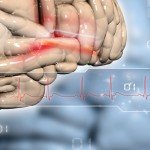Guided Imagery for Pain Relief: Improving Clinical Outcomes with Mind-Body Healing
Tolle Causam
Sasha Pustam, ND (inactive)
According to psychotherapist Belleruth Naparstek, guided imagery is “a form of deliberate, directed daydreaming – a purposeful use of the imagination that deploys words and phrases designed to evoke rich, multisensory fantasy and memory.”1 It uses mental images or “thought[s] with sensory qualities”2 that can create change on a physiological level either by distraction or by altering the experience of pain itself.3 The use of this simple, yet potentially highly effective tool can provide a viable pathway for the relief of pain and related symptoms, as will be described in this article. It may be used alongside or integrated with other therapies and can be self-administered or led in real time by a practitioner.
Mechanism of Action
The experience of pain is very personal, and so, too, is the interplay of social, psychological and biological factors that make it so.4 Guided imagery activates the “right brain,” which deals with images, emotions, and feelings.5 It allows one to bypass the logical mind and effect change at the level of the limbic brain, where an emotional event can be stored as a memory and translated into a physical response.6 This ability to tap into the deeper layers of the subconscious mind is what makes this therapy so effective as an agent of powerful change.
Guided Imagery in Clinical Practice
There are different scenarios in which guided imagery may be used to improve clinical outcomes in patients suffering with pain. Here are some examples:
When Pain is Anticipated
Response imagery is a process whereby subjects are guided to imagine an experience of little or no pain in response to a potentially painful event. In a study of healthy participants, response imagery was shown to induce a placebo-like effect to a cold pressor test (ie, a brief immersion of the hand in ice-cold water).7 This outcome can be extrapolated to situations where there is a heightened expectancy of pain, such as during a dental or surgical procedure, but also in a more generalized way, to the experience of triggers and aggravations in a chronic condition. It is also useful to note that the content of the imagery matters in producing a hypoalgesic or hyperalgesic effect.8 Being as clear and defined as possible in the exact sensations that one desires to have with regards to pain will no doubt go a long way toward achieving a positive outcome.
As a Self-Administered Therapy
Guided imagery, when combined with therapies such as progressive muscle relaxation and Qigong, can be both highly effective and empowering. Progressive muscle relaxation involves developing awareness and memory of the sensation of one’s muscles when tense and then relaxed, so that physical relaxation can be readily induced early on as tension starts to build, but before pain is felt.
In a study of 22 children with recurrent abdominal pain, those who did guided meditation alongside progressive muscle relaxation were shown to have a greater likelihood of abdominal pain reduction than those who only did breathing exercises.5 In general, this treatment can be a fun way for children to participate in their healing and become more aware of their bodies and how they function.
Another study, including 208 patients receiving chemotherapy, revealed that an intervention of guided imagery and progressive muscle relaxation had a significant positive effect on pain outcomes, as compared to the control group, which received standardized treatments for cancer- and chemotherapy-related symptoms.2 Although there is no clear way to assess which therapy (guided imagery vs progressive muscle relaxation) had a greater contribution to the outcomes in either of these 2 studies, guided meditation is generally considered a more powerful technique for pain syndromes.5,9
Guided imagery can easily be carried out alongside other mind-body therapies. Indeed, an entire toolkit for self-care can be provided to patients, with instructions to be used at home. This was done in a study of 100 women who were undergoing surgery for non-metastatic breast cancer. One group was given audio files with directions for various mind-body techniques, including breathing, progressive muscle relaxation, meditation, guided imagery, and self-hypnosis. The result was a greater decrease in pain perception in the perioperative period in the intervention group, as compared to the control group that received treatment as usual.10
Integrated with Other Therapies
Guided imagery can join forces with other therapies to create a more well-rounded healing experience. One such therapy is Qigong – also known as “moving meditation” – which combines breathing with a coordinated, somatic flow to harmonize the mind with the physical body. This exercise is often reinforced with visuals from nature that strengthen the mind’s focus to lead the Qi, to induce a smooth flow through the body. This is often accompanied by a reduction in pain.9
Dr Mary Lynch, professor of anesthesiology, pain medicine, and preoperative care at Dalhousie University in Halifax, Nova Scotia, investigated the link between Qigong and pain reduction. As Dr Lynch observed, “The mindful, meditative state that you reach through Qigong releases neurochemical and immunological messengers that improve healing and reduce pain. Some people in my study reduced the amount of medications they were using or got off meds completely.”11
Another practice where guided imagery can be integrated is during an acupuncture session,12 wherein the body is already primed to receive healing and return to balance. As with Qigong, the mind can build greater focus this way and possibly increase therapeutic outcomes using acupuncture. As this is an area without available research, the latter is the author’s proposition.
Other Positive Benefits
As mentioned earlier, guided imagery provides patients a sense of accomplishment as they become an active part of the process of managing their pain. This improves self-efficacy, a term used to describe a person’s confidence in successfully managing a challenge. Fibromyalgia patients with high self-efficacy have been shown to more effectively reduce their levels of pain compared to those with low self-efficacy.13
As it is a simple technique that does not involve a steep learning curve, guided imagery can be implemented very quickly. It also does not require special equipment beyond one’s own mental faculties. As such, it can be done virtually anywhere that provides one the presence and stillness of mind, whether at the beach, on the public transit, or indoors.
Guided imagery is also particularly effective for children, due to their highly active imaginations,5,14 while also helping them to develop a sense of personal responsibility for their health. This sets the stage for a more connected relationship with the body that can result in a more informed and keen perception of their health, in general, as they learn to observe their inner world.
Summary
Given its ease of use and reported effectiveness in altering the perception of pain, guided imagery is a very handy tool for the naturopathic practitioner. It can be of great benefit when there is a history of trauma6 and/or a concurrent mental-emotional condition such as anxiety. This is due to its ability to circumvent the rational mind and get as close as possible to the source of pain in the brain. It is quick and easily accessible and can be used by anyone including children. Indeed, as Belleruth Naparstek remarks, “Given the last twenty years of research in various clinical trials, it is surprising that imagery isn’t prescribed as a universal, low-cost preventative health tool.”15
Photo by Toa Heftiba on Unsplash
References:
- Naparstek B. Invisible Heroes: Survivors of Trauma and How They Heal. New York, NY: Bantam Books; 2007.
- Charalambous A, Giannakopoulou M, Bozas E, et al. Guided Imagery And Progressive Muscle Relaxation as a Cluster of Symptoms Management Intervention in Patients Receiving Chemotherapy: A Randomized Control Trial. PLoS One. 2016;11(6):e0156911.
- Kwekkeboom KL, Hau H, Wanta B, Bumpus M. Patients’ perceptions of the effectiveness of guided imagery and progressive muscle relaxation interventions used for cancer pain. Complement Ther Clin Pract. 2008;14(3):185-194.
- Fillingim RB. Individual differences in pain: understanding the mosaic that makes pain personal. Pain. 2017;158 Suppl 1:S11-S18.
- Weydert JA, Shapiro DE, Acra SA, et al. Evaluation of guided imagery as treatment for recurrent abdominal pain in children: a randomized controlled trial. BMC Pediatr. 2006;6:29.
- Delunas E. The Spellbound Brain. New Brain, New Science, New You. First Moon Press; 2016.
- Peerdeman KJ, van Laarhoven AIM, Bartels DJP, et al. Placebo-like analgesia via response imagery. Eur J Pain. 2017;21(8):1366-1377.
- Fardo F, Allen M, Jegindø EM, et al. Neurocognitive evidence for mental imagery-driven hypoalgesic and hyperalgesic pain regulation. Neuroimage. 2015;120:350-361.
- Yang JM. How can Qigong Cure Back Pain? In: The Pain-Free Back. Wolveboro, NH: YMAA Publication Centre, Inc; 2017.
- Stoerkel E, Bellanti D, Paat C, et al. Effectiveness of a Self-Care Toolkit for Surgical Breast Cancer Patients in a Military Treatment Facility. J Altern Complement Med. 2018;24(9-10):916-925.
- Lynch M. Chronic pain alternatives. Dalhousie Medical Research Foundation. Available at: https://dmrf.ca/researchers/dr-mary-lynch/. Accessed March 1, 2020.
- Mehl-Madrona L. Augmentation of conventional medical management of moderately severe or severe asthma with acupuncture and guided imagery/meditation. Perm J. 2008;12(4):9-14.
- Onieva-Zafra MD, García LH, Del Valle MG. Effectiveness of guided imagery relaxation on levels of pain and depression in patients diagnosed with fibromyalgia. Holist Nurs Pract. 2015;29(1):13-21.
- Rusy LM, Weisman SJ. Complementary therapies for acute pediatric pain management. Pediatr Clin North Am. 2000;47(3):589-599.
- Zablocki E. Pathways to Healing: Guided Imagery Aids US Troops. February/March 2010. Townsend Letter Web site. http://www.townsendletter.com/FebMarch2010/pathways0210.html. Accessed March 1, 2020.

Sasha Pustam, ND (inactive), is a graduate of the Canadian College of Naturopathic Medicine. Dr Pustam currently resides in Trinidad, where she runs a private practice that incorporates healing of the mind, body, emotions, and spirit. She believes in honoring ancient traditions and has launched an interview series to help raise awareness of the natural resources and wisdom of the elders in her country. Facebook: https://www.facebook.com/drsashapustamnaturopath/









